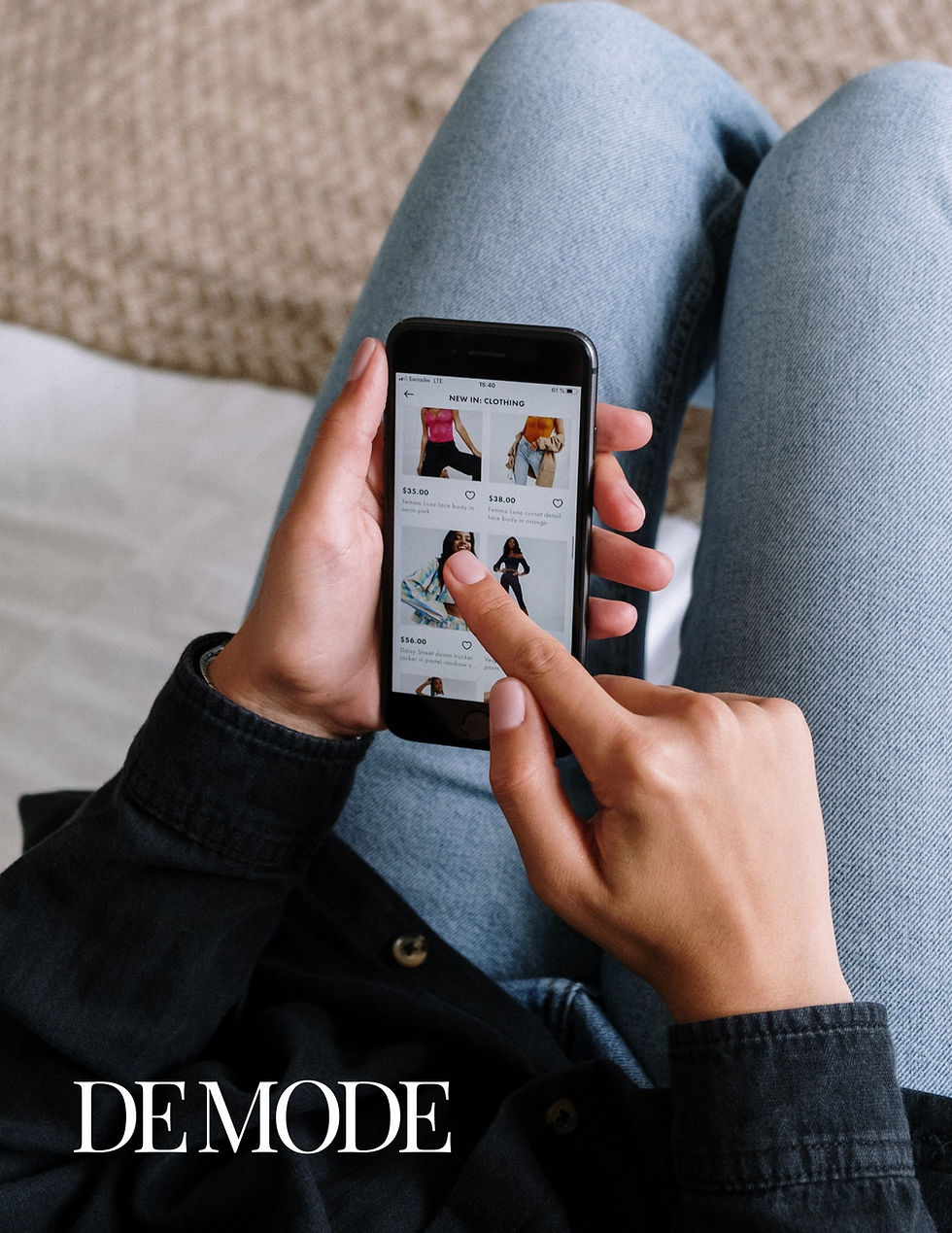"FASHION AND SOCIAL MEDIA - HOW SOCIAL MEDIA IS CHANGING THE FASHION INDUSTRY": DE MODE GLOBAL
- DE MODE

- Aug 6, 2023
- 3 min read
ORIGINALLY PUBLISHED IN DE MODE
Article Published on: 06TH AUG 2023 | www.demodemagazine.com
The rise of social media has had a transformative impact on various industries, and the fashion world is no exception. From the way fashion brands market their products to the democratization of style influence, social media has revolutionized the fashion industry in numerous ways. In this article, we will explore the profound impact of social media on the fashion industry and the ways it has changed the way we consume, engage with, and define fashion.
The Proliferation of Fashion Influencers
Social media platforms like Instagram, TikTok, and YouTube have given rise to a new breed of fashion influencers. These individuals, with their sizable followings, have become powerful trendsetters and taste-makers. Fashion influencers share their personal styles, outfit ideas, and product recommendations, directly influencing their followers' purchasing decisions. Brands now collaborate with influencers to promote their products and reach a wider audience, leading to a shift in the traditional advertising landscape.

The Democratization of Fashion
Social media has democratized the fashion industry by providing a platform for anyone with creativity and a unique sense of style to showcase their outfits and ideas. Fashion enthusiasts and bloggers can now gain recognition and build an audience without the need for traditional gatekeepers like fashion magazines or modeling agencies. This democratization has led to a more diverse representation of style and body types, challenging the industry's historical norms.
Real-Time Fashion Show Coverage
Social media has changed the way fashion shows are experienced by the general public. In the past, fashion shows were exclusive events limited to industry insiders and press. Now, social media platforms provide real-time coverage, enabling fashion enthusiasts to experience runway shows as they happen. Live streaming and Instagram Stories give the audience an up-close look at collections, making fashion more accessible and inclusive.
Direct Interaction with Consumers
Social media allows fashion brands to have direct and real-time communication with their consumers. Brands can respond to comments, address concerns, and engage with their audience on a personal level. This direct interaction creates a sense of community and fosters brand loyalty. Moreover, feedback from consumers on social media provides valuable insights for brands to improve their products and services.
Shoppable Content and Influencer Marketing
Social media platforms have integrated shopping features that enable users to purchase products directly from posts or ads. Brands can tag their products in posts, making it easier for users to access product information and buy what they see. Influencer marketing has also leveraged this feature, allowing influencers to tag products they are wearing or using, leading to a seamless shopping experience for their followers.
Fashion Brand Storytelling
Social media has given fashion brands an opportunity to tell their stories and connect with consumers on a deeper level. Brands can share behind-the-scenes content, designer insights, and the creative process behind their collections. By humanizing the brand and sharing its values, social media has enabled consumers to establish an emotional connection with their favorite brands.

User-Generated Content
User-generated content (UGC) has become a powerful marketing tool for fashion brands. Consumers share photos and videos of themselves wearing the brand's products, creating authentic and relatable content. Brands can then repost this content, acknowledging and celebrating their customers, which fosters a sense of community and inclusivity.
Social Media as a Trend Predictor
Social media platforms serve as valuable trend predictors for the fashion industry. Brands can monitor user engagement, hashtags, and comments to identify emerging trends and consumer preferences. This real-time data allows brands to stay agile and responsive, adjusting their strategies and collections accordingly.
Virtual Fashion and AR Filters
Social media has embraced virtual fashion and augmented reality (AR) filters, allowing users to virtually try on clothing and experiment with different styles. Brands are leveraging this technology to offer immersive shopping experiences, giving consumers a better understanding of how garments look and fit before making a purchase.
Sustainability and Conscious Consumerism
Social media has played a pivotal role in promoting sustainability and conscious consumerism in the fashion industry. Influencers and content creators often advocate for ethical and sustainable fashion choices, encouraging consumers to be more mindful about their purchases. This movement has led to increased demand for sustainable fashion options, prompting brands to prioritize sustainability in their practices.

Conclusion The advent of social media has revolutionized the fashion industry, impacting every aspect from marketing and communication to consumer behavior and design. Fashion influencers and bloggers have emerged as powerful voices, shaping trends and influencing purchasing decisions. The democratization of fashion has brought a diverse range of styles and voices to the forefront, challenging traditional norms. Social media has provided a direct and personal line of communication between brands and consumers, fostering brand loyalty and community engagement. Moreover, it has facilitated real-time fashion show coverage and immersive shopping experiences, making fashion more accessible and interactive. As social media continues to evolve, its influence on the fashion industry will only deepen, transforming the way we perceive, consume, and engage with fashion in the years to come.



Comments